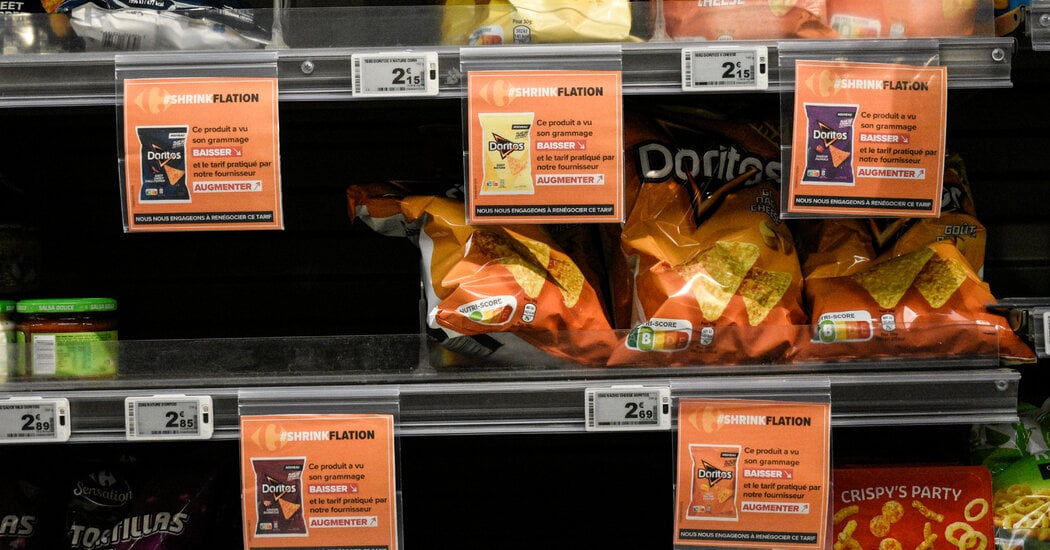I wish we had a small percent of what France does for its consumer rights in the United States.
That’s because we don’t set shit on fire every time the government looks at us wrong.
Perhaps it’s time to change that
You’re right. We have idiots setting themselves on fire in front of courthouses instead.
We all need to apologize to France for literally every mean thing we ever said about them.
This has been the law in Brazil for more than 10 years now. We have lots of problems here, but at least our consumer protection laws are top notch. And, believe or not, they’re enforced successfully.
That is what a respectable government looks like
It feels a bit “least we could do” ish?
They’re not setting standard size scales for basic products or establishing price floors based on wholesale/production costs, much less intervening to increase supply or reduce overhead costs.
This is a bit like the surgeon generals warning on a pack of cigarettes. Nice, I guess. But hardly a game changer.
Really we just need to standardize sizes for consumer goods. For example: drinks can come in 250, 500, 750, 1000, and 2000 mL sizes. Sold soap must be sold in units of 100, 500, or 1000 grams. And so on…
But then you get shrinkflation in the product itself. Less emulsifiers in the soap, drinks with corn syrup replacing sugar, and powders like cinnamon cut with lead powder.
Not saying it couldn’t be done, just that businesses are really incentivised to find the loopholes and exploit them.
In Australia we call this “skimpflation” because they aren’t shrinking the final product, they’re skimping on ingredients to lower production costs.
It’s the bane of my existence because brands I know and love will change their ingredients without warning and without changing anything on the packaging (sometimes not even changing the ingredients list! If the ingredients list has always just said “starch” they don’t have to change anything going from arrowroot starch to cheaper potato starch)
I have allergies and I’ve bought two boxes of the same product at the same time, and had an allergic reaction to one, but not the other.
I used to always blame it on my housemates not washing the cooking utensils properly, but I now use separate cooking equipment and I clean down the kitchen before I start and cook at odd times so I’m the only one using the kitchen.
I’ve started emailing companies after my allergic reactions to determine if they have changed an ingredient, and 90% of the time they confirm they have changed the ingredients. Usually they put some PR spin on it about the new ingredient being more allergy friendly or sustainable (they don’t clarify “environmentally” so I assume they mean “financially sustainable for the profits of our company”)
Less emulsifiers in the soap, drinks with corn syrup replacing sugar, and powders like cinnamon cut with lead powder.
Standard formulas for a given product. Anything that isn’t 40% sugar drink is “immitation soda drink”. Anything that’s under-emulsified can’t be called real soap.
These are solvable problems at a regulatory level. But at some point, it may be more cost efficient to simply nationalize the under-performing industry. Perhaps Coca-Cola just can’t cut it making soda drinks anymore, and the firm needs to be broken up and devolved to the various states as State Soda Bottling Company
I don’t think this is the right way to go. Mandatory “compare prices” to be displayed with the same, or better, viability as the price is much better. That way the consumer immediately sees that the price went up since last week. What it also brings is the opportunity to compare which one of two sizes of the same product is a better deal.
I’m sorry but I don’t understand your suggestion. That’s what the sign does. It warns clients when the package got smaller and or price went up. Also, all stores are obligated to show the price/kg on all products so it’s easy to compare.
You don’t need a special sign for shrinkflation. What’s needed is just price per kg (I live in the metric world) displayed as big as the price per unit. This should be enforced as the norm and not on whether the store wants to do it or not.
Consumers who aren’t interested enough to keep track of price increases since last week won’t care about a special sign either.
Price per kilogram is good if you want to compare product A vs product B (we already have that). Here the point of this law is to be able to compare product A with itself in another point in time, because there is nothing actually in place to be able to reliably do that other than keeping a list of all prices at all time. The two together will be a very good tool to inform the consumers about the shady practice of some producers…
The whole point with shrinkflation is to trick the consumer to think that they’re buying the same amount when they don’t.
If you make it easy for the consumer to see what the cost is per kilogram, they will immediately see that the price for the same size package of cereal they always buy has gone up.
It’s okay if you want to pay extra for your groceries, but I don’t. I’m perfectly fine with compare prices since the compare prices are unaffected by the change of package sizes.
No, because some things I only buy once a month or less… I’m trying my best to remember all the prices and all, but it’s easy to miss these kinds of things when there’s dozens of things you’re buying. So yes, an extra warning for when a product got more expensive is fine. Again…the price/kg is already there, not sure why you’re beating that poor horse. This is on top of the price/kg. An extra warning, not replacing the price/kg sign, which, again, is already below every item in the store.
Good luck with someone doing your work for you.
Producers make millions on shrinkflation. That means they have millions to spend on finding a way around this and you as a consumer will still end up paying for it. I hope I’m wrong, I really do but I’m sure they will find a way around this.
At this point I just stopped buying chips. Feels like such a waste to fill the bag less than half way…
good for you. Not really a necessity anyhow, have some nuts, it’s better for you.









